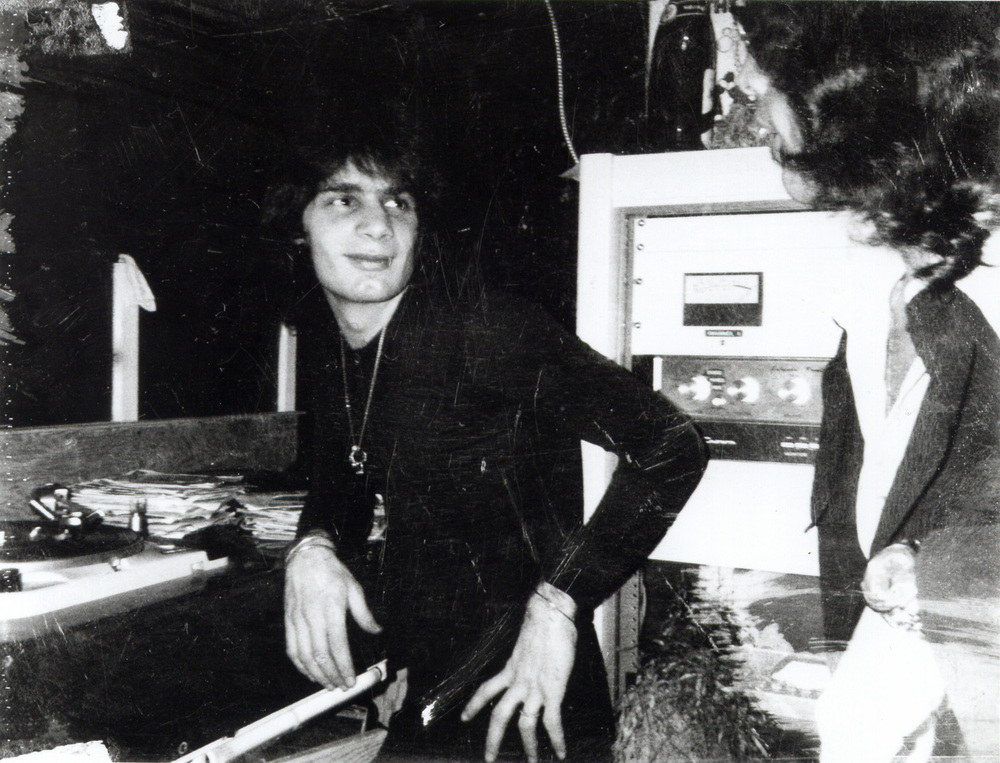Francis Grasso (March 25, 1949 – March 20, 2001) was a pioneering club disc jockey born in Brooklyn. He is best known for having invented in the late 1960’s what nowadays is considered basic among DJs, namely the technique of “beatmatching“.
Grasso started his career as a DJ in 1968 at a NYC nightclub called Salvation II, situated on top of an apartment house on Central Park. While visiting the club by coincidence, he was asked to substitute for Terry Noel, the resident DJ who failed to show up on time that night for work, and despite being behind the turntable for the very first time, he wasn’t afraid to take over the crowd. Originally, in fact, he was a dancer (after a motorbike accident, his doctor advised him to embrace dancing as therapy) and that is why he could actually feel and understand what a crowd expected from a DJ.
In an interview for DJ History dated 1999, Grasso explained how he felt when he first played: “It was just feeling, the excitement, the electricity that was in the air. It was just phenomenal. I said I would pay them (they didn’t know it). It was that much fun. It wasn’t until the middle ’70s when everybody got into disco and Saturday Night Fever, and then it became so routine and mundane, and everybody wanted to be a disc jockey. Like, hey, everybody’s a disc jockey. Everybody and their mother’s a disc jockey, actually.”
When he finally gained regular gigs, he began to realize that the best way to keep the crowd on the dance floor was to create a non-stop mix of music. This is how Grasso introduced to the disco scene a technique that had been already used for many years in the radio industry, the trick of “slip-cuing“; it consists in holding a record while the turntable rotates beneath the slipmat and then releasing it at the right moment thanks to the use of headphones (Grasso was also the first DJ outside of radio stations to require headphones as part of his setup).

Later, the pioneering club disc jockey invented a technique called “beatmatching” (aka pitch cue), which consists in mixing two records together, trying to match their rhythms. In order to do so, he would keep two songs playing simultaneously for as long as possible… a very difficult task at the time, considering that the turntables Grasso used back then didn’t have all functions and conveniences of the modern ones like pitch control.
“Back then, you couldn’t adjust the speeds. You had to catch it at the right moment. There was no room for error. And you couldn’t play catch up. You couldn’t touch the turntables. I had Thorens, and you couldn’t do that on Thorens. All you had to do was start at the right moment. Nobody mixed like me. Nobody was willing to hang out that long. Because if you hang out that long, the chances of mistakes are that much greater. But to me it was second nature. I did it like I walk my dog.” – Francis Grasso, from the liner notes of the Rhino Disco Box Set.
Grasso is also famous as well for his musical choices, since he would experiment with different sounds and music genres, introducing also African and Latin beats to the dance-floor. In fact, his erotic mix of Chicago Transit Authority’s ”I’m a Man” with Led Zeppelin’s ”Whole Lotta Love” used to drove the crowd crazy, thanks to the perfect combination of bass drums and orgasmic moans.
“I had been known to make mixes like Chicago Transit Authority’s “I’m a Man,” the Latin part, into “Whole Lotta Love” by Led Zeppelin. I played a lot of African music. I started African music in nightclubs. Michael Olatunji’s “Drums of Passion,” which bothered me when Santana came out because they didn’t give Michael Olatunji credit for “Jingo,” and it’s not even pronounced that way.” explained Grasso to DJ History.
Soon, his technique started to spread across the country first and then around the world, laying the foundation for the modern club DJ’s technique and “the notion of the disc jockey as artist and live remixer“.
Watch one of the rare interview with Francis Grasso below!
You can also read the full DJ History’s interview with Grasso here!







































